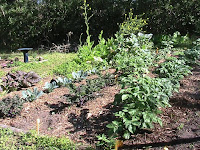I was touched when I first saw the "place setting for one, a table for all" but it is never occupied. It is waiting for a Prisoner of War or a Missing in Action member of the Armed Services to come home.
A small round table with a white and crisp table cloth is visible at any military organization and any veterans association in your community.
The items on the table are special and symbolize different things such as the following:
The bread plate contains a slice of lemon to remind us of their bitter fate, captured and missing in a foreign land.
The salt sprinkled on the plate is to remind us of the countless tears of their families and friends whose grief know no end.
The single red rose, displayed in the vase, signifies the blood they may have shed in sacrifice to ensure the freedom of our beloved United States of America.
The red ribbon, tightly tied on the vase, represents the red ribbons worn on the lapels of the thousands who demand with unyielding determination a proper accounting of our comrades who are not among us today.
The candle is the light of hope which lives in our hearts to illuminate their way home, away from their captors, to the open arms of a grateful nation..
The wine glass is inverted for they can not toast with us today.
The Bible represents the strength gained through faith to sustain those lost from our country, founded as one nation under God.
The American flag reminds us that many never return--and have paid for supreme sacrifice to ensure our freedom.
The chair is empty! They are not here.
"We all called them our comrades, brothers, sisters, and friends. Do not let them be forgotten for surely they have not forgotten us,"
The above information was gleaned from "Navy Live," the official blog of the US Navy on October 6, 2014.
Thank you for your service.







